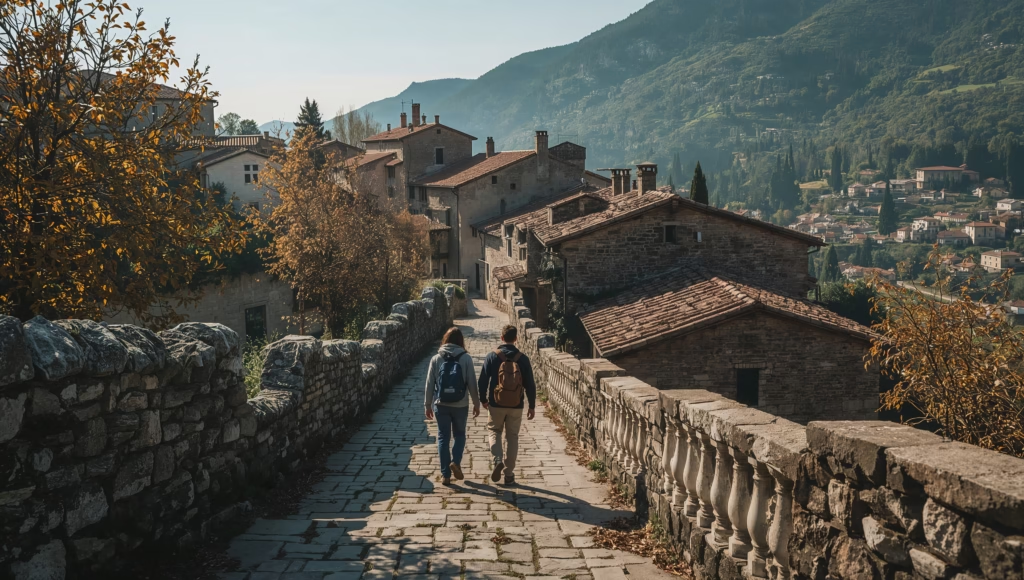In 2025, Italy remains one of the most visited countries on Earth—synonymous with romance, art, and unparalleled cuisine. But with record-breaking crowds returning post-pandemic, the conversation has shifted from celebration to sustainability. The new buzzword isn’t “bucket list”—it’s balance.
Overtourism, the phenomenon where too many visitors overwhelm a destination, has become a central issue across cities like Venice, Florence, Rome, and the Amalfi Coast. Narrow streets overflow with foot traffic. Locals feel pushed out. Cultural landmarks struggle under the strain. But here’s the good news: Italy is responding—with creativity, policy, and a surprising amount of charm.
This isn’t just about limiting numbers. It’s about rethinking how tourism works—and how it can serve both travelers and communities better.
What is Overtourism, Exactly?
Overtourism happens when the volume of tourists in a place exceeds its capacity—whether environmentally, socially, or economically. In Italy, that means:
- Long lines at major landmarks
- Rising rents and cost of living for locals
- Damage to historic infrastructure
- Friction between residents and travelers
But instead of closing its doors, Italy is developing smart, sustainable solutions that protect its cultural treasures while still welcoming the world.

Key Solutions Being Implemented in 2025
1. Timed Entry & Reservation Systems
Many major attractions now require pre-booked time slots to reduce crowding. Venice introduced a ticketing system for day-trippers, Florence uses QR-coded access to the Uffizi, and Rome’s Colosseum limits daily footfall.
This helps:
- Improve the quality of the visitor experience
- Protect fragile sites from wear and tear
- Allow better planning and staffing
2. Tourism Taxes & Entry Fees
To manage resources and reinvest in preservation, many destinations now collect modest tourist fees:
- Venice: €5 day-pass for non-overnight visitors
- Rome: Increased hotel tax for non-residents
- Cinque Terre: Trail maintenance fees for hikers
These funds go directly into infrastructure, sanitation, and local culture initiatives.
3. Promoting “Second Cities” and Off-Season Travel
Italy is actively steering travelers toward lesser-known but equally stunning destinations. Campaigns now highlight gems like:
- Lecce (Apulia): The “Florence of the South”
- Parma (Emilia-Romagna): Foodie paradise with historic charm
- Bolzano (South Tyrol): Alpine beauty meets Italian flair
- Urbino (Marche): Renaissance art without the crowds
Additionally, tourism boards are offering discounts and packages for off-season travel, showing Italy’s beauty in fall, winter, and early spring.
4. Caps on Group Tours
Cities like Florence and Venice have implemented limits on group sizes, now typically capped at 25 people or fewer, with some areas banning megaphones or large flags to reduce noise and visual clutter.
5. Local Guides and Authentic Experiences
By prioritizing local tour operators, Italy ensures that tourism dollars stay in the community. More travelers are seeking out experiences like:
- Cooking classes in real homes
- Vineyard visits with winemakers
- Artisan workshops in quiet villages
This shift reduces pressure on over-saturated spots and deepens the traveler’s connection to Italy’s culture.
6. Smart Mobility Solutions
Italy is investing in alternative transport options to ease congestion:
- Electric ferries in Venice
- Hydrogen buses in Florence
- Bike and scooter shares in smaller towns
Cities like Milan are also expanding car-free zones and green corridors.
What Travelers Can Do
Solving overtourism isn’t just a job for governments—travelers play a huge role too. Here’s how:
- Travel off-season (April, October–December)
- Book ahead, especially for popular museums or restaurants
- Explore lesser-known destinations and neighborhoods
- Support local businesses over global chains
- Respect local customs, noise levels, and dress codes
Choosing conscious travel means moving slower, looking deeper, and leaving a positive footprint.
The Role of Vexo Italy
Companies like Vexo Italy are at the forefront of this shift. Rather than mass-market tours, Vexo curates personalized, low-impact experiences across Italy—from private countryside getaways to after-dark cultural walks in Rome.
Their itineraries are built with sustainability in mind: partnering with eco-conscious hotels, reducing single-use plastics, and focusing on real, human connection.
The Future: From Crisis to Catalyst
While overtourism has posed serious challenges, it’s also inspired a renaissance of smarter travel across Italy. Cities are rediscovering their rhythms. Travelers are becoming more thoughtful. And the tourism industry is reimagining itself not as a factory—but as a bridge.
In the words of a Venice shop owner: “We don’t want fewer visitors. We want better visitors. People who come to understand, not just to consume.”
Final Thoughts: The Italy You Don’t Know—Yet
Yes, the Colosseum is breathtaking. Yes, the canals of Venice are a dream. But Italy’s true magic often lies in the side streets, the shoulder seasons, and the moments between itineraries.
The future of Italian tourism is not about limiting beauty—it’s about redistributing it. So take that detour. Book that village stay. Linger longer.
Because when we travel with intention, we don’t just preserve the places we love—we deepen our love for them.
Travel smarter with VexoItaly.com: personalized journeys that help you experience more—and impact less.
